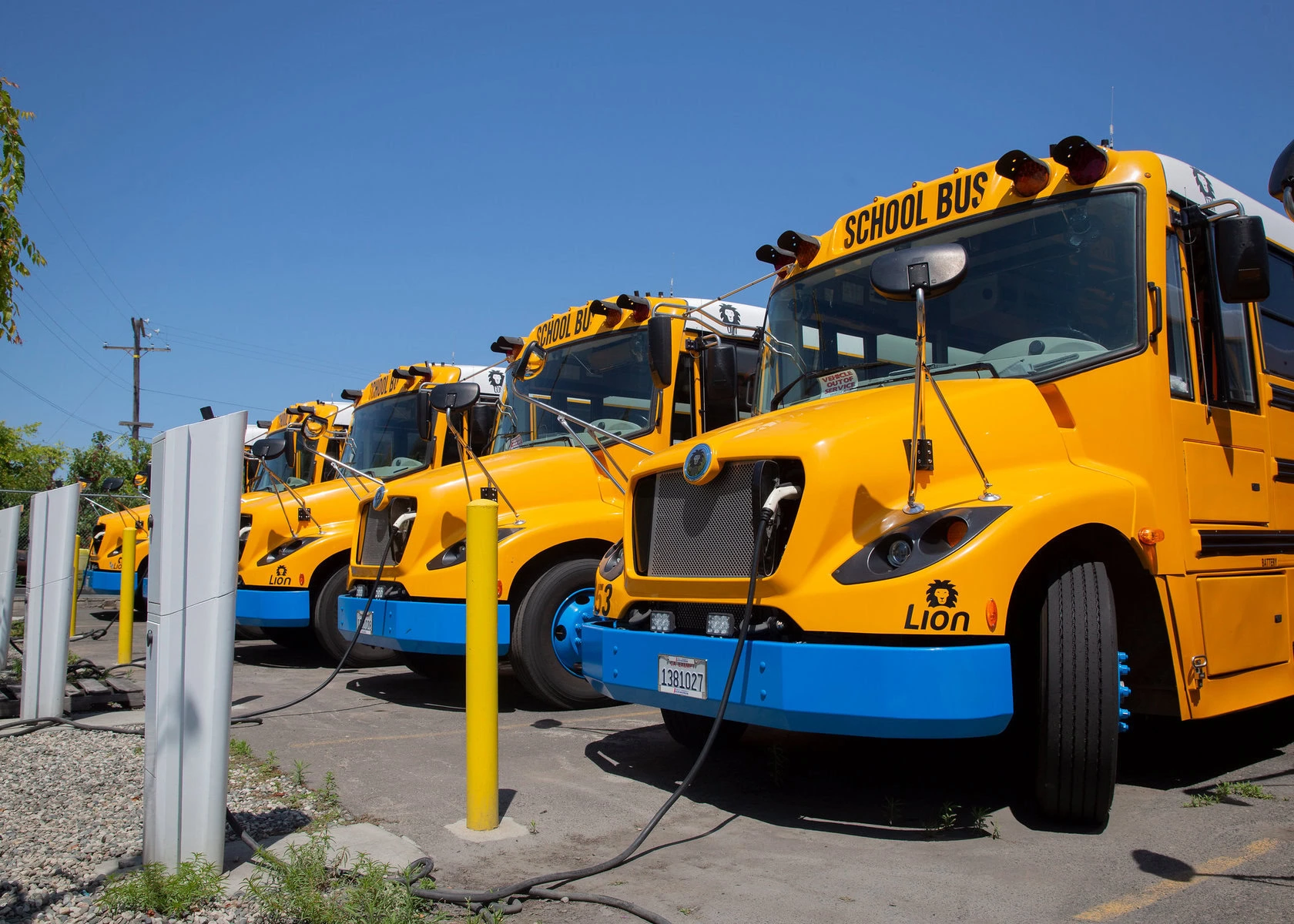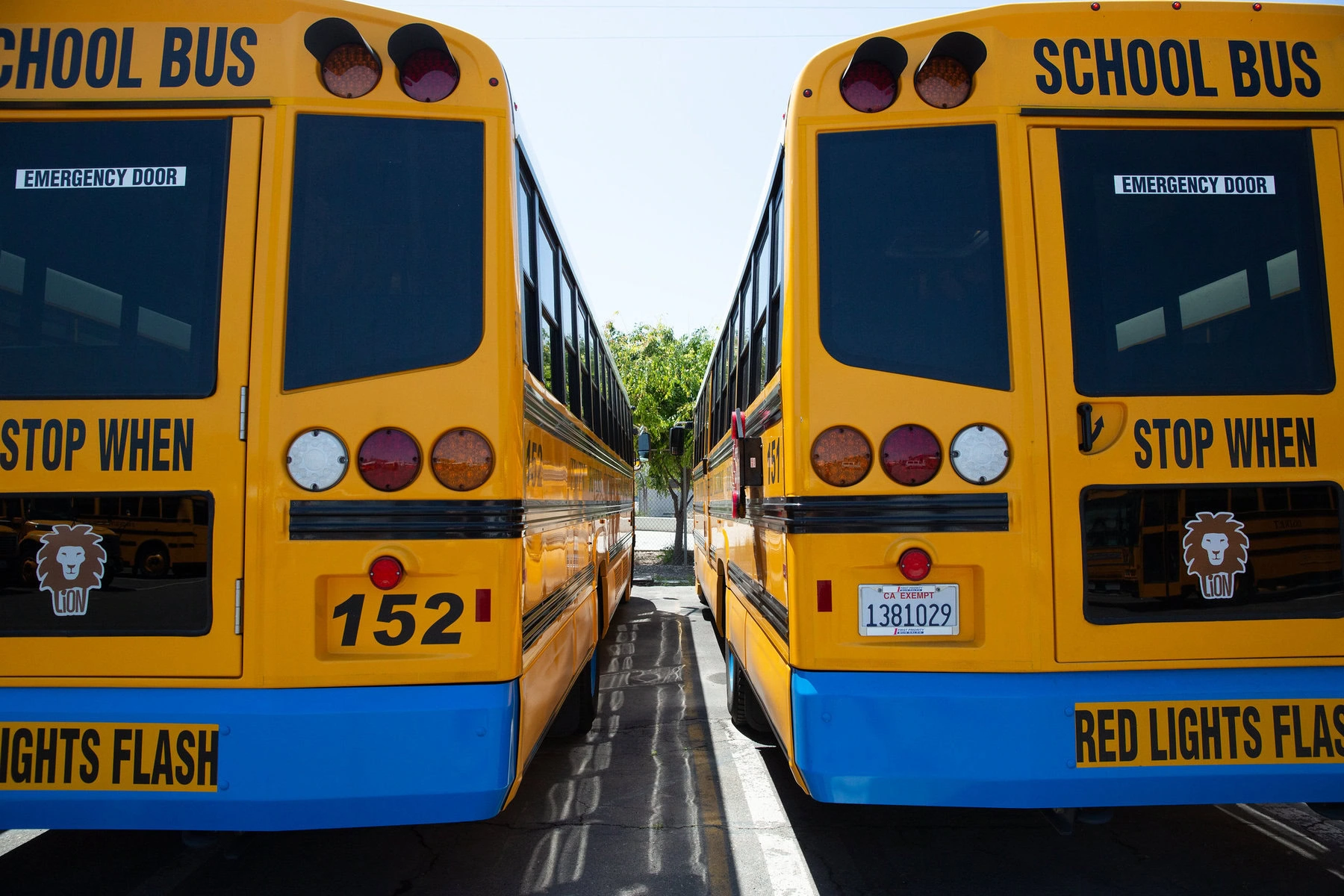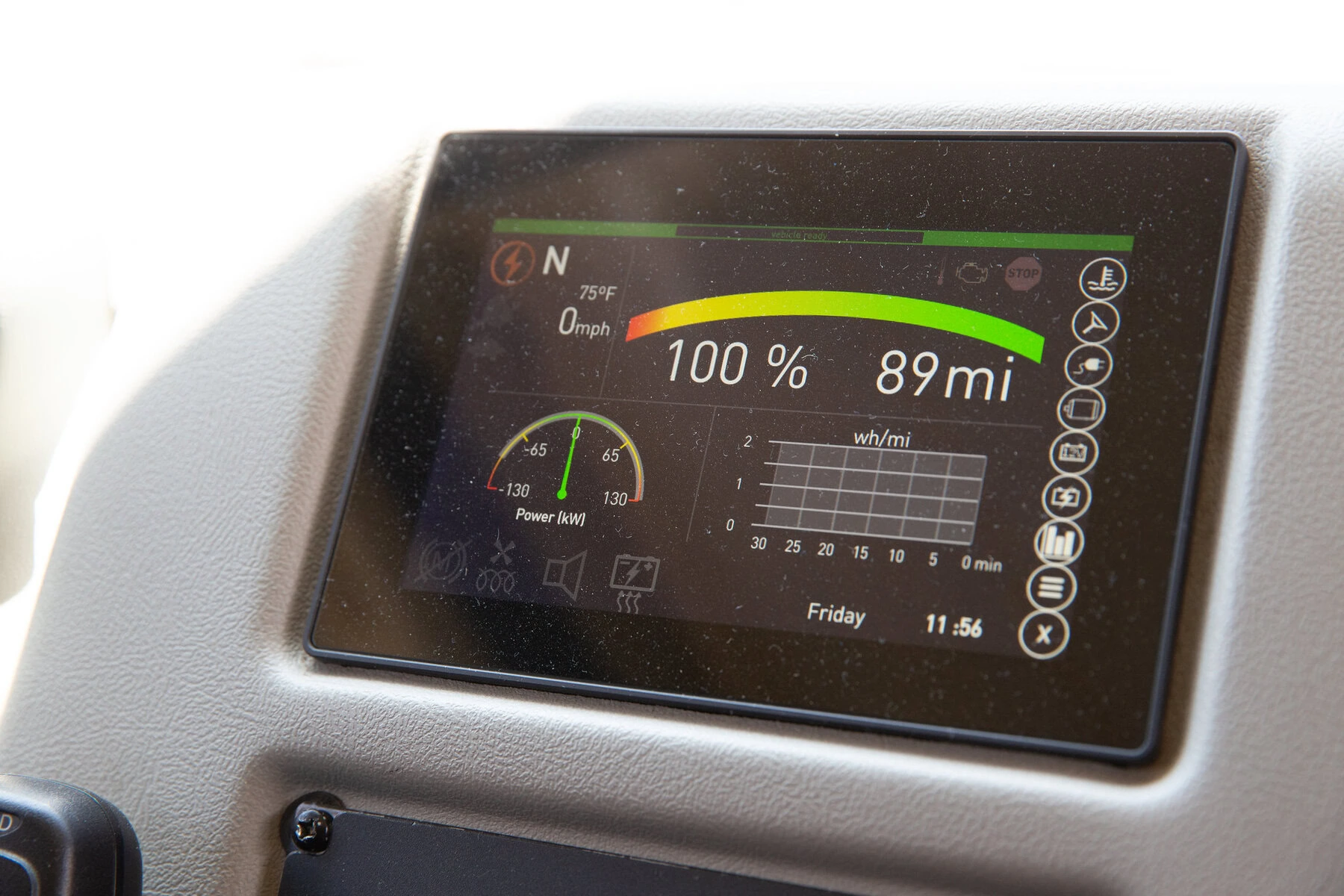Across the country, fall is synonymous with the new school year: sharpened pencils, new bento-style lunch boxes and, for many, the return of the iconic yellow school bus. Only this year, millions of students will be transported by yellow school buses that are electric.
This change was several years in the making, and it’s a welcome one: Diesel buses — which comprise the majority of school buses in use today — spew exhaust that has been linked to serious physical and cognitive issues in children.
“Diesel school buses are incredibly polluting, not just for the environment — for air quality — but for children’s health. They are very harmful to children’s respiratory health, lung health, you name it,” says Carolina Chacon, the coalition manager for the Alliance for Electric School Buses. Studies have shown that diesel fumes, one of the most toxic forms of air pollution, are associated with heart and lung conditions such as asthma as well as cognitive performance issues. Even students who ride buses that have been retrofitted with cheap engine modifications like “diesel particulate filters” perform better on tests, according to researchers at Georgia State University. “The science behind it is really clear that diesel is harmful, period. But for kids, whose lungs and brains are still developing, it is especially bad,” Chacon says.
When the Alliance for Electric School Buses formed in 2018, members were focused on demanding governors use the Volkswagen settlement funds [from the Volkswagen emissions scandal, aka Dieselgate] to purchase electric school buses. But in most states, the governors or their environmental departments chose to use the funds to swap out older diesel buses for “clean diesel” buses. This was a move in the right direction, but a lower bar than what the Alliance for Electric School Buses was fighting for.
Then, in 2019, the Alliance switched its focus to policy. It began working with the office of then-Senator Kamala Harris to introduce the first electric school bus bill to Congress. “Her office actually drafted the Clean School Bus Act of 2019,” Chacon says. The bill didn’t advance far, though, and Harris ended up running for president in 2020. “But the need for electric school buses did become a talking point during the primary,” Chacon says. “It was something Harris brought to the table, and that [Washington] Governor Jay Inslee brought to the table.”
Eventually, when Biden and Harris were elected, they made electric school buses a priority of their administration. Members of the Alliance for Electric School Buses continued to work with members of Congress to help create a program modeled on the Clean School Bus Act. That ultimately became the EPA Clean School Bus Program, a $5 billion program that was part of Biden’s signature Bipartisan Infrastructure Law of 2021. Its funding, which ends in fiscal year 2026, is being used to replace diesel school buses with either zero-emission buses (electric) or low-emission buses (alternative fuel buses, powered by propane or natural gas).
Chacon and all the members of the Alliance have been thrilled by how successful the program has been. The EPA has done three funding rounds since April of 2022 and each time, it has been inundated with applications. “To date, the federal government has distributed nearly $3 billion that has resulted in 8,500 new clean school buses,” Chacon says. (Some of those are propane or compressed natural gas, but 90 percent of the requests for funds have been for electric school buses.)
Crushed by negative news?
Sign up for the Reasons to be Cheerful newsletter.
One of the grant recipients has been Los Angeles Unified School District (LAUSD), which passed a resolution last year for full fleet electrification. Daniel Kang, director of transportation for the district, says he currently has 56 electric school buses on the road with another 180 on the way — arriving in increments this fall and winter. “All 180 will be on the road starting April 2025,” Kang says.
These 180 electric school buses are expected to remove an estimated 780,000 tons of carbon dioxide from the environment per year. The district will also save a yearly average of $10,000 per bus in maintenance and fuel costs combined (depending on local electric rates, which fluctuate due to demand). That’s a total savings of nearly $2 million per year.

The reaction thus far has been very positive, Kang says. Not only is the air surrounding schools and children much cleaner, the buses are quieter. “It’s a night-and-day difference,” Kang says. “There are some drivers — human nature, opposed to change — who were like, ‘I love my diesel — it’s powerful, I can go up the mountain.’ But once they get in [the electric school bus] it’s really hard to deny the benefits because there’s less noise, less heat. They’re saying the experience is peaceful.”
Isaac Aquino, who has driven a bus for LAUSD for the past six years, says he prefers his Lion electric bus to diesel. He loves many things about it, but foremost is how quiet it is. “With the conventional ones that have the hood and the engine up front, the motor is loud. You have your two-way radio on, the kids are making noise — it’s hard to hear. It’s very rattly in the front,” he says. But on the electric model there is no noise. “It’s completely silent.” That is, except for the chime that turns on automatically when it goes 20 miles per hour or slower, which is a safety feature. (Like electric cars, electric school buses emit a recorded noise to alert pedestrians to their presence.) Aquino knows he and his students are breathing cleaner air because when his electric bus is getting maintenance and he has to take a spare diesel bus for the day and mops his brow with a tissue, he sees dirt on it. “It’s like dirty air!” he says. He says the Lion buses also have superior air conditioning systems, which both he and the students appreciate.
Switching 236 buses to electric models comes with some challenges, though. One piece of the puzzle that LAUSD hasn’t solved for yet is infrastructure. At the moment, the district only has enough charging stations at its bus yards to charge 56 buses. That was an important learning experience for Kang and his colleagues. In the first round of EPA funding, LAUSD only applied for funding for the buses, but in subsequent rounds, they’ve requested half of the money go for new buses and the other half for charging stations.
There may also be unanticipated issues once electric bus fleets reach a certain size. When the number of electric buses reaches into the hundreds, some school districts have noticed that charging them all at the same time puts too much pressure on the grid. “The utility partners are saying, ‘We didn’t know about this but there’s a pulsing because there’s so much demand,’” Kang says.
Kang thinks it will be sorted out soon. It’s just that the technology is so new. “In regards to this large-scale electrification, we’re still in the iPhone 2 stage,” he says.

There are also sometimes compatibility issues between the buses and the chargers, which are made by different companies. “Sometimes they won’t talk. They’ll sit all night connected but in the morning the driver finds out it wasn’t charging. Everyone is scratching their head: ‘Is it the bus? Is it the charging manufacturers?’” Kang says. Because bus manufacturers don’t necessarily want to get into making charging stations — a very specialized technology — the industry answer at the moment is to introduce charging management software that will sync up bus and charging station.
Aside from these speed bumps, the greatest limitation of electric buses is that they don’t have the longer range that diesel buses do. That’s one of the reasons that — for now at least — Kang plans to hold onto some diesel buses. “We gotta keep some of them at our yards because they are the only buses with a 300-mile range,” he says. Some of the longer field trips, like from Los Angeles to Bear Mountain, exceed the range for an electric bus (which can get only 150 to 162 miles on one charge). But this may be easily solved by better infrastructure, he says: “In short, we need chargers everywhere.”
But for most districts, the range isn’t an issue. For the Cherokee Central School System in North Carolina, the longest route is 40 miles. “And we can do both of our runs — morning and afternoon — on one charge,” says Donnie Owle, service manager and vice president of the Cherokee Boys Club. The Boys Club, a tribal entity for the Eastern Band of Cherokee Indians, has six electric buses right now with another 15 on the way — via EPA funding. Their first bus came via the VW settlement money and the next four came from a partnership with Duke Energy, the local electric company. The tribe bought the sixth. “Duke Energy did a pilot program and they’re testing using our buses for V2G — vehicle-to-grid,” Owle says. That is, they’re using the buses, which sit idle for many hours each day, to power the grid during peak energy use times. This practice, which LAUSD is also looking into, could be a win-win for school districts, which would be paid by the electric company for the energy.

As in Los Angeles, Owle says most Cherokee Central School System drivers have been won over by the new buses. “Some of the drivers don’t want to drive electric, then when they get on and drive it, they don’t want to get out of it!” he says, laughing. They like that the bus accelerates a lot faster, so that pulling out onto the highway is safer, he says. And he echoes LAUSD driver Aquino’s appreciation of the quiet: “You can actually hear the kids talk. You can hear what the kids are saying about you!”
In addition to the lack of noise — and the fact that his bus is clean and brand-spanking-new — there’s something else Aquino loves about his electric school bus: It’s the talk of the town. “Our bumpers and rims are lime-green, so it makes the electric buses stand out. Everybody looks at the bus when we’re at a stop sign and you can see them talking about it!”
And it’s fun to see the students so excited, too, he says. “Especially if they haven’t been on the electric bus before they come in and are like, ‘Oh my god! Is this a new bus?’”
The post All Aboard the Electric School Bus! appeared first on Reasons to be Cheerful.


